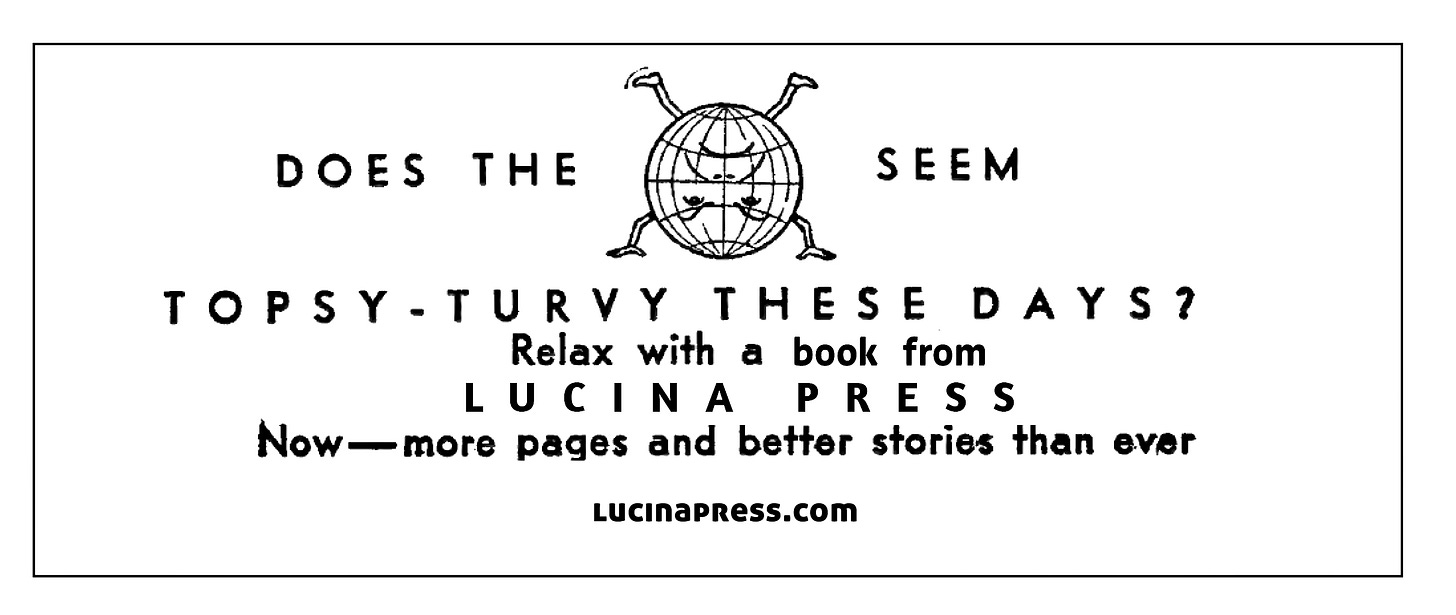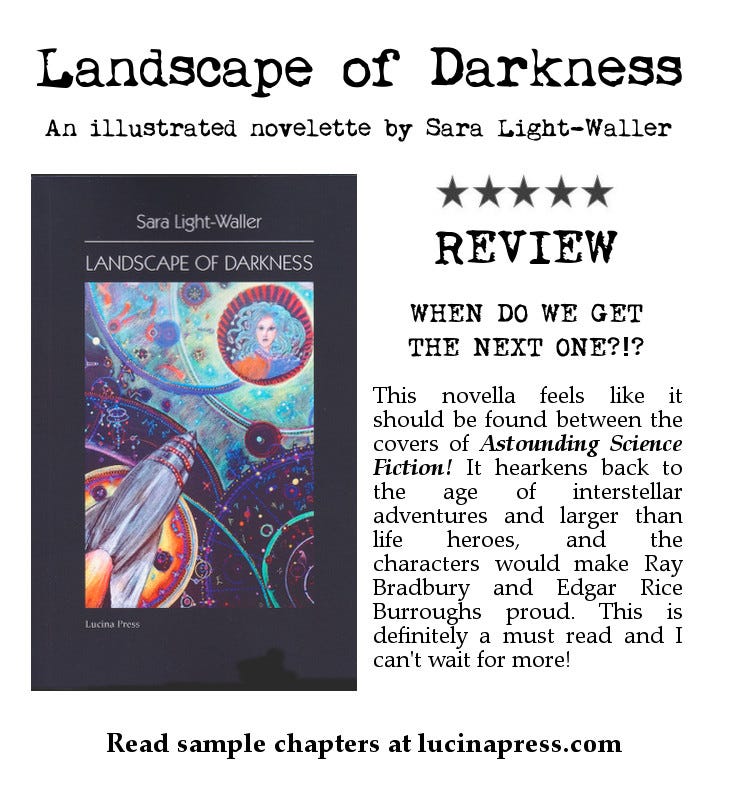It’s been a few years since I wrote my first illustrated space opera—a novelette called, Landscape of Darkness. I’m still proud of it and will continue Sam Mercury’s adventures at some point in the future. My goal for the book was an accurate portrayal of 1940’s science fiction coming as close as I could it in terms of plot, characterization, and illustrations. I also wanted it to have what Robert Lowndes referred to as a “feeling of wonderfulness.”
“The feeling of wonderfulness did not necessarily require happy endings or complete triumph over all obstacles; but it did present protagonists as heroes in that they grappled with the fantastic catastrophes that arose from dangerous inventions, or the invaders of Earth, or the perils of space, time, and dimension, etc. They were essentially ordinary men, sometimes idealized, to the point of ridiculousness….Whatever else the admittedly cardboard characters of this era in science fiction were, they were not victims of a world and universe that was just too much for them.” —Robert Lowndes (1956)
Our current world is so soaked in bad news that it’s hard to look at anything online without needing a stiff drink afterwards. This has infused into our collective consciousness like a bad smell and is encouraged by doomsayers pontificating on every virtual corner.
I know the power of story. Storytellers help make sense of the world—explaining everything from natural phenomena to the actions of gods. More than just myths and legends though, stories also transmit rules for moral conduct and appropriate behavior. In a grander sense, they inject ideas into the collective of mankind. But it’s a bit like injecting something into the bloodstream, the material may be healthful or it might be a poison. And too much of anything can act as a toxin. Ideas have the same effect. Inject enough despair into society and people start getting depressed, even suicidal.
Dystopian narratives are extremely addictive. You get a rush imaging yourself in desperate scenarios and comparing gradations within a very narrow band—how violent or how devastating. Slim survival rates versus none at all. In these types of stories mankind often stands at the edge of a precipice either figuratively or literally. But he’ll step off gladly if he thinks he’ll be saved by a superman, or an alien saucer, or maybe a Jedi in a futuristic fighter craft. The danger of such stories is very real as they change our perceptions of reality. Good and bad swap places and we become confused in the real world, too. Story is very powerful and as a storyteller I feel it is important to take care of what we write. We have to do better than just churning out the next disaster.
We can start by considering the types of stories that are healthy and perhaps healing, rather than just slicing open more wounds. To do that we first need to remember what real human beings are capable of. For this type of story we might begin with some human heroes—skilled individuals who are not super soldiers, have not been genetically-engineered, or mystically-enhanced. They’re just people, like you or me.
The plot might run something like this: a morally-centered human being stands up in a crisis and uses their skills (not impossible, MacGyver-like skills, but skills that ordinary people have) to good advantage and with eventual success. They may fall down a few times along the way but that’s okay. Grit is an awfully good quality in a hero.
What about using some technology in our new plot? Heck yes! Let’s imagine space ships and human colony planets. You can’t get rid of violence entirely because stories thrive on conflict. So how about violence where people understand that it’s wrong, even when they have to fight. And let’s not make a joke out of it, okay? Violence is unpleasant. War isn’t something to aspire to, unless you’re an arms dealer or have an unnatural taste for blood.
What about machine-men, robots and cyborgs? Well, that’s up to you. Personally, I’m against it. But if you desire your children’s dreams to include having chips implanted under the skin and additional memory slots added to their dear little heads, by all means. (I explore this topic in more depth in my story, Incorruptible.) Just remember that after those changes they're no longer human. So that’s not an option for me. Thanks just the same.
Now…what do we have so far? An adventure story with a human, highly-skilled protagonist. A moral theme. A clear delineation between what is human and not human. High technology. Adventures in space. With me so far? Great! Now let’s add a few additional details—the human qualities of compassion, creativity and the capacity to dream big dreams. That’ll give us the bones of a story that makes the heart happy. Characters that make you feel good, like you could be them—for real.
It’s my opinion that in this time of crisis we must break out of the dystopian rut and embrace a new type of science fiction story, even if it bucks current ideas of science and technology. We need new wide-ranging stories—some of them so fantastic that writers from the past would have trouble imagining them. But we will.
Landscape of Darkness is that type of story. In Captain Sam Mercury’s world, humanity has made a hard choice leading a better future. His is not a perfect world but it is a HUMAN one.
To find out more about Landscape of Darkness or Incorruptible, click here.
Let’s make the future better, we can do it!
This is the Rocketeer signing off for today.







And now we have the zombie apocalypse everybody wanted. And me without my six-guns.
It's a tired old doom and gloom, end-of-the-world always around the corner scenario push...
BUT there is the stand up and rise to the challenge aspect. What it takes to get humanity off the couch, off their phones, and off of their asses.
So there's THAT.
Plus, the fact the world's been messed up for awhile, so things now are just exposing all that more.
Because there's more LIGHT to waller in.
😉😉